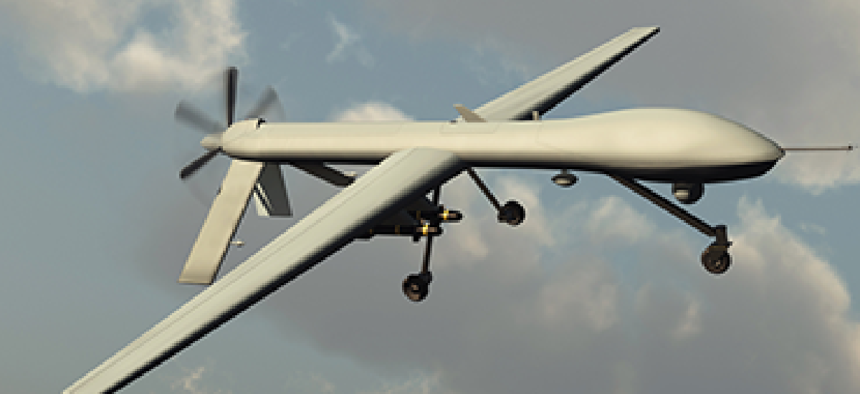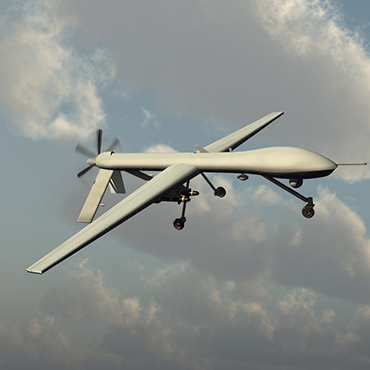Study: Pentagon needs strategic approach to UAVs

A Center for Strategic and International Studies report notes decreased R&D spending at the same time several other countries are gearing up their own drone programs.

Is the United States losing its edge in unmanned air, ground and sea systems? The topic is a source of consternation among policy experts and debate on Capitol Hill.
Unmanned systems make sense for a superpower withdrawing from Afghanistan but keen on maintaining a defense posture capable of responding to global threats. But the Defense Department is set for a third consecutive year of decreased R&D money set aside for unmanned systems, according to a recent Center for Strategic and International Studies report. Meanwhile, the report said, some 18 countries are working to produce their own armed and unmanned aircraft.
“The countries that develop new military technologies are not always the ones that figure out how to use them,” cautioned Col. Kenneth Callahan, director of the Air Force's Remotely Piloted Aircraft Capabilities Division, at a May 8 panel discussion hosted by CSIS.
DOD is at a strategic juncture where it “needs to spend some time thinking hard about how we want to use these systems, what mission sets we want to get into, and where we want to invest our time and money,” he added.
One way of doing more with fewer dollars spent on unmanned systems is sharing knowledge across the military services. The services are at various stages of sophistication in unmanned systems but still collaborate on their deployment. The Navy is “probably a decade” behind the Air Force in using unmanned aircraft, Capt Chris Corgnati, deputy director of ISR Capabilities in the Navy’s OPNAV N2/N6, said on the CSIS panel.
“Cooperation amongst the services right now in the field of RPAs is as good as it has ever been, in my estimation,” he said. Corgnati’s office works with the Marines on RPAs multiple times a day, collaboration that has historically “been very tight and continues to be so. The new piece probably is the Navy-Air Force cooperation over the last two years [which] has been outstanding.”
Budget constraints aside, the Pentagon needs a consolidated and more strategic approach to unmanned systems, the report’s authors argue. For this they recommend establishing a Defense Unmanned Systems Office that would report directly to the deputy secretary of Defense. A two-star general or flag officer would lead the office and “monitor and advise the deputy secretary regarding the cross-DOD research, development, testing and evaluation budget as it relates to unmanned systems,” the report said.
The goal of the office is “greater integration from a strategic perspective about where we’re going and what we’re doing,” Col. Ethan Griffin, a military fellow at CSIS, said in an interview. “Obviously, there are limited dollars right now, but that doesn’t mean experimentation and industry engagement can’t continue … so that when there are some dollars available, they can be smartly focused.”
Rep. Randy Forbes, R-Va., included the recommendation in legislation he introduced April 28.


